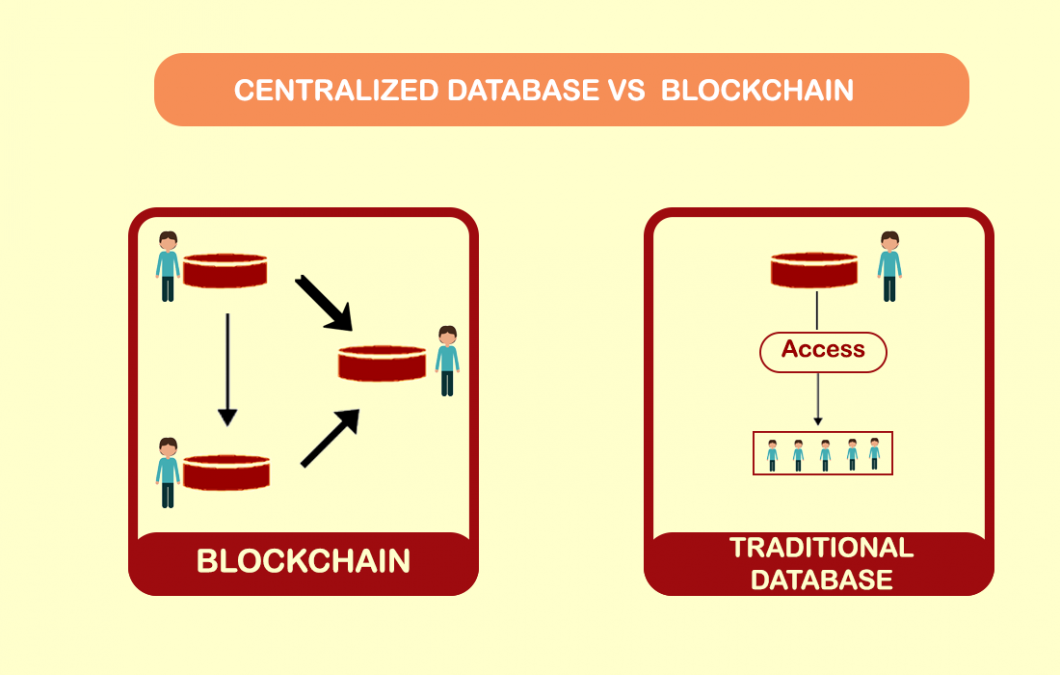Blockchain vs. Traditional Databases: Key Differences
The technological landscape has seen a surge in the adoption of blockchain technology, sparking debates about its advantages over traditional databases. While both systems serve as repositories for data, their underlying architectures, functionalities, and use cases are fundamentally distinct. 
This article delves into the critical differences between blockchain and traditional databases, offering a comprehensive understanding of their features, benefits, and limitations.
Understanding the Core Concepts
Blockchain: A Distributed Ledger System
Blockchain is a decentralized, immutable ledger designed to record transactions securely. Data in a blockchain is organized into blocks, linked chronologically, and verified through consensus mechanisms such as Proof of Work (PoW) or Proof of Stake (PoS). Blockchain systems operate on peer-to-peer networks, eliminating the need for centralized control.
Key features include:
- Decentralization: No single entity controls the network.
- Immutability: Data cannot be altered once recorded.
- Transparency: Transactions are visible to participants within the network.
Traditional Databases: Centralized Data Repositories
Traditional databases, such as SQL databases, are centralized systems designed to store, retrieve, and manage structured data. They rely on a central authority to maintain and update records. These databases follow the CRUD (Create, Read, Update, Delete) model, allowing flexible data modification.
Common characteristics include:
- Centralized control: Managed by a single entity or organization.
- Scalability: Optimized for high-performance transactions.
- Customization: Suitable for specific business needs through extensive schema design.
Architectural Differences
Data Storage and Organization
- Blockchain: Data is stored in blocks linked sequentially, ensuring a tamper-proof chain of records. Each block contains a cryptographic hash of the previous block, ensuring data integrity.
- Traditional Databases: Data is stored in tables with rows and columns, allowing relational organization and efficient querying through SQL.
Consensus Mechanisms vs. Central Authority
- Blockchain: Uses consensus mechanisms to validate transactions. Popular methods include PoW, PoS, and Practical Byzantine Fault Tolerance (PBFT). These mechanisms ensure that data is trustworthy without a central authority.
- Traditional Databases: Relies on a central administrator to verify and update records, which can introduce vulnerabilities if the central authority is compromised.
Performance and Speed
- Blockchain: Slower due to decentralized verification processes. For instance, Bitcoin processes 3-7 transactions per second (TPS), whereas Ethereum processes around 30 TPS.
- Traditional Databases: Capable of handling thousands of TPS, making them suitable for high-speed applications like banking and e-commerce.
Security and Integrity
Blockchain: High Security through Cryptography
Blockchain employs advanced cryptographic algorithms to secure data. Features like hashing, digital signatures, and public-key infrastructure ensure robust protection against data breaches.
Additionally:
- Immutability: Prevents unauthorized data tampering.
- Distributed Nature: Reduces single points of failure, enhancing resilience.
Traditional Databases: Strong but Centralized Security
Traditional databases rely on firewalls, access controls, and encryption for security. However, their centralized nature makes them susceptible to single-point failures, insider threats, and cyberattacks.
Notable characteristics include:
- Customizable Security Protocols: Tailored to meet organizational requirements.
- Regular Backups: Critical for data recovery in case of breaches or hardware failures.
Use Cases and Practical Applications
Blockchain’s Growing Use Cases
Blockchain’s unique features make it suitable for specific applications where trust, transparency, and decentralization are paramount.
Notable use cases include:
- Cryptocurrencies: Platforms like Bitcoin and Ethereum revolutionize digital payments.
- Supply Chain Management: Ensures end-to-end visibility and traceability.
- Healthcare: Secures patient records and enhances interoperability.
- Smart Contracts: Automates and enforces agreements without intermediaries.
Traditional Databases in Business Operations
Traditional databases remain indispensable for industries requiring rapid data processing and complex queries.
Key applications include:
- Enterprise Resource Planning (ERP): Manages business processes efficiently.
- Customer Relationship Management (CRM): Centralizes customer data for improved decision-making.
- E-commerce Platforms: Handles inventory, orders, and transactions seamlessly.
- Banking Systems: Facilitates secure, high-speed financial operations.
Comparative Advantages and Limitations
Advantages of Blockchain
- Transparency: Public ledgers allow all participants to verify transactions.
- Decentralization: Eliminates reliance on a single point of control.
- Trustless Systems: Ensures trust without intermediaries.
- Enhanced Security: Cryptographic methods protect against tampering.
Limitations of Blockchain
- Scalability Issues: Limited transaction throughput.
- Energy Consumption: High resource usage in PoW systems.
- Complexity: Steep learning curve for implementation and integration.
Advantages of Traditional Databases
- High Performance: Supports rapid data processing and querying.
- Flexibility: Easily customizable to fit diverse business needs.
- Proven Reliability: Trusted technology with extensive use cases.
Limitations of Traditional Databases
- Centralized Vulnerabilities: Susceptible to cyberattacks.
- Limited Transparency: Requires trust in the central authority.
- Data Integrity Risks: Higher risk of unauthorized modifications.
Choosing the Right Solution
Deciding between blockchain and traditional databases depends on specific use case requirements. Consider the following factors:
- Data Transparency: Opt for blockchain if transparency and traceability are crucial.
- Transaction Speed: Traditional databases are better for high-speed operations.
- Decentralization Needs: Use blockchain for decentralized applications.
- Cost Efficiency: Traditional databases are often more cost-effective to implement.
Conclusion
While blockchain introduces revolutionary concepts in data management, traditional databases remain indispensable for many business operations. Each system has its strengths and weaknesses, and the choice ultimately depends on organizational priorities.
References
- Blockchain Explained
- Blockchain vs. Database
- How Does Blockchain Work?
- SQL Databases Overview
- Proof of Work vs. Proof of Stake
- Supply Chain Management and Blockchain
- Cryptocurrency Basics
- Database Security Best Practices
- Smart Contracts Overview
- Blockchain Scalability Challenges

![[ℕ𝕖𝕧𝕖𝕣] 𝕊𝕖𝕝𝕝 𝕐𝕠𝕦𝕣 𝔹𝕚𝕥𝕔𝕠𝕚𝕟 - I Think I Have Crypto PTSD](https://cdn.bulbapp.io/frontend/images/819e7cdb-b6d8-4508-8a8d-7f1106719ecd/1)



































